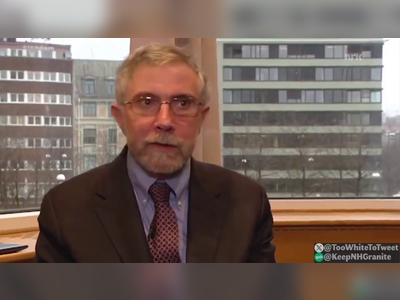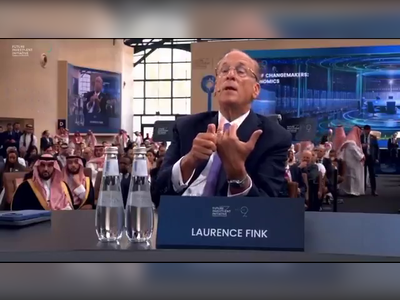The New World Of Work: 5 Trends To Watch
For those who are currently job-seeking, these trends can be used to evaluate your next career move. They can also help all of us navigate the new world of work and aid in modernizing the talent systems in our companies.
Reimagining job benefits:
1. Education as a benefit:
Gone are the days of one-off professional development courses. Employers that are leading in the future of work are now offering employees at all levels the opportunity to earn degrees. Case in point: Amazon, Macy’s, and Starbucks. Historically, employers have spent 80% of their professional development dollars on their highest wage earners. We will see that in 2022 and beyond, more employers will shift to adopt an “education as a benefit” strategy to attract, retain and grow their workforce at all levels. Edutech platforms like Guild Education are making it easier for all employers to offer this upskilling opportunity to their incumbent workforce. The reality is that many advertised unfilled positions are developmental opportunities for internal candidates. Companies who understand this are poised to fair better in today’s competitive market for talent.
2. Care giving as a benefit:
In 2021, women left the workforce in record numbers, in large part, due to their unpaid family care giving responsibilities. Employers who want to keep brilliant women in the workplace will step in where our government has waffled by providing care giving as a benefit. Gone are one-size-fits-all benefits like free lunches and gym members, start-ups like Compt are personalizing benefits to individual employee needs and preferences. It allows employees to use benefits to cover education, care giving and anything else that is essential in the moment.
Talent as a service:
While we can expect the attrition rates we’re seeing during the Great Resignation to subside over time, three things will remain: higher expectations for employers to meet employees where they are, an increased number of people who are out on leave for longer periods at any given time, and lower longevity - with the average employee tenure at some high-growth companies now estimated to be as low as 1.8 years.
This confluence of trends means that companies will need to find creative ways to outsource talent. Similar to software as a service, talent as a service is a model that allows employers to hire flexible talent when they need it, for as long as they need it. New players in this space like SV Academy and Colaberry are placing and training for highly-skilled roles in emerging career fields.
This approach is attractive for employers because it de-risks hiring and staffing. For workers, this model allows greater autonomy to change their careers and trajectories. Talent as a Service and contract workers at various levels will likely become an essential part of any company’s long-term talent strategy, and align with a broader shift to more entrepreneurial ways of working.
Rising employee power:
With rising instability and labor shortages, many organizations are unable to operate on a business model predicated on low wages. There will be a push to attract employees by offering greater access to equity and ownership. In recent history, we have seen this cooperative model work for newsrooms, grocery stores and restaurants—and expand through partners like Apis & Heritage Capital Partners. For example, grocery stories like Publix have nearly 20,000 employees who have worked with the company for more than 15 years. Publix offers a stock ownership plan to these employees (at zero cost to them).
Moreover, we’re seeing a fundamental mismatch between the expectations of workers and what employers can provide in the current market. Massive companies like Amazon and Starbucks are beginning to significantly expand benefits to more holistically support employees, but medium-sized businesses are far less capital rich to sustainably readjust their support.
The Great Resignation will not last forever in its current size, but these waves of disruption will signal that organizations need to fundamentally readjust to meet a set of worker expectations (higher wages, expanded benefits, education opportunities, etc.) that are completely different from five years ago. While the companies at the top have the capital to do so, we can expect the change to be much messier for smaller businesses—likely leading to federal and state level policy changes at minimum.
The rise of “The Metaverse” in reskilling and apprenticeships:
In my discussions with employers in the life sciences and medical tech sectors, entry-level manufacturing job training is cited as a major requirement to success. Unfortunately, this kind of training often involves prohibitive upfront investments to create job-specific training centers. Augmented reality (AR) and virtual reality (VR) have the potential to bridge this gap and make job-specific manufacturing training far less expensive and far more accessible.
We will also likely see a coalescence around apprenticeships—transforming this from an “alternative pathway” to a pathway that should increasingly be made available to all Americans. We’re already seeing the capital markets beginning to bet on this space with the near-billion dollar valuation of the metaverse and larger venture rounds closing. When we look back on this decade in 2030, we will see that apprenticeships became a major part of our education-to-employment system—let's hope that novel technology and experiential education democratized these immersive opportunities making them less time and physical-space dependent.
Jobs-first higher education model:
We will see a significant expansion of the jobs-first higher education model being piloted at National Louis University with Propel America (and emulated by others). This move will blur the lines between workforce and post secondary education and enable learners to simultaneously earn high-value certifications that have historically been categorized as non-credit earning college credits that can be used towards stackable associate or bachelor degrees.
Services like Crafted will also allow employers to leverage their existing on-the-job training to close skills gaps, increase career progression, and reward employees with widely recognized credentials relevant for tomorrow’s workforce. Crafted provides employers and higher education leaders with the data tools they need to plan, pilot, and scale job-embedded degree pathways that can translate into meaningful higher education credentials.
The pandemic and its lasting effects have brought into sharp relief the true costs of engaging in work. As businesses struggle to find talent in this highly competitive labor market, we are reminded that “people choose to work with people, not companies.” Attracting (and keeping) strong talent requires us to be people-centered and more closely examine how we treat one another.
As workers around the world reevaluate the purpose of work in their lives, we will see a gravitation towards employers who are more humane—not just in the way they treat their employees but also in the way that they conduct their business and show up in communities.











